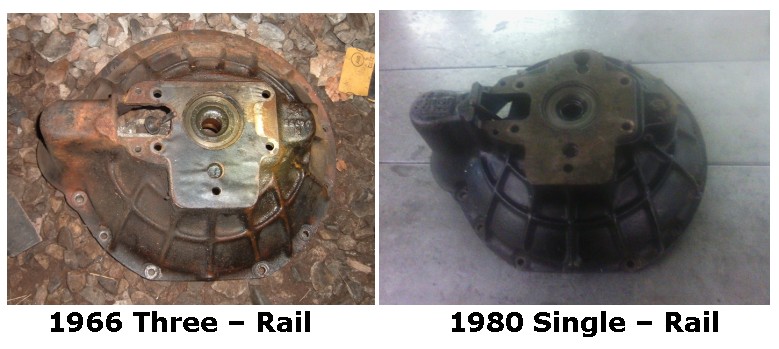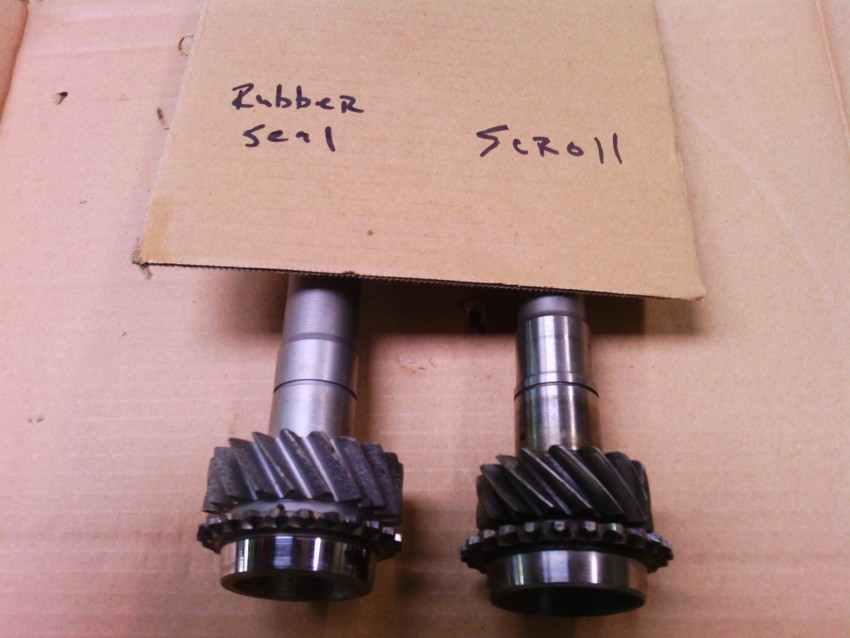 10-13-2014, 10:14 PM
10-13-2014, 10:14 PM
|
#266 (permalink)
|
|
Changfa diesel + Suzuki
Join Date: Jul 2012
Location: Northern, NY
Posts: 527
Centurion - '74 FIAT X1/9 Centurion Full Race DNA Last 3: 143.5 mpg (US)
Thanks: 160
Thanked 463 Times in 235 Posts
|
Deviating from the original Centurion plans causes many self-created problems.... but whining - there's no whining here! 
.
Decades ago, American manufacturers had already discovered the magic of interchangeable parts. For example, Chevrolet developed it's original 1955 model year small block V8 from 265 cu in (4.3L) incrementally until it reached its peak of 400 cu in (6.6L) in 1970. With few exceptions, parts from engine to engine would interchange - pretty good.
.
If this was a huge plus for racers and bone-yard pickers, then Pontiac may have been the King's delight. Their 1955 267 cu in (4.7L) V8 also grew incrementally to a whopping 455 cu in (7.5L) by 1970! With few exceptions (like the 301 and 303 V8's) nearly all parts were interchangeable to include connecting rods. The difference in block sizes were identified by small and large journal cranks (they were all considered "big blocks"). This rivaled, if not exceeded that of the small block Chevy.
.
Drivetrain interchangeability was even easier as the years rolled on especially when the GM line began to standardize transmission choices.
.
According to Wikipedia, Triumph Spitfire was in production from 1962-1980.
During those years Spitfires went through various changes such as engine displacement and driveline upgrades. So when mixing and matching Spitfire engines, transmissions, and rear ends, you'll need to pay attention to driveshaft lengths, mounting flange bolt patterns and thicknesses, and flange bolt sizes for axle shafts, transmission output, and differential input. What
were they thinking?
.
In this section of Centurion's adventures, we are met with another challenge; swapping out a 1966 three-rail 4-speed with a 1980 single-rail 4-speed with optional overdrive. The newer, larger transmission won't mate up to the old bellhousing for a couple of reasons. One is easy to spot in the following photo:
.

.
.
Ok, so all we need to do is get a bellhousing with the correct mating surface and we're gold!
.
Wait - Not so fast! There's another issue too... Some of the correct bellhousings have a "scroll seal" and some have a "shaft seal" and as luck would have it, they don't appear to be straight across the board compatible. When looking for the correct one, I was presented with the following pic showing the differences between to transmission input shafts - one using a scroll seal, and the other using a shaft seal:
.

.
As usual, the solution was simple - nothing money couldn't fix.
.
Replacement bellhousing on the way couldn't arrive fast enough. In the meantime, we can inspect the pressure plate and clutch. If both are good, maybe we can remount them to the flywheel and be ahead of the game. Well, the clutch is in excellent shape along with the springs and all ten splines.... too bad new transmission has twenty splines on the input shaft.... yay.
.

.
.
Top of the class - School of Hard Knocks 
.
~CrazyJerry
.
Last edited by changzuki; 08-04-2018 at 12:00 AM..
|
|
|

|